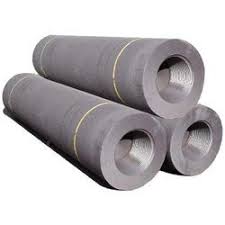
China’s Graphite Electrode prices Surge Further amid Increased Inquires

The prevailing prices for 450mm UHP grade graphite electrodes are assessed at RMB 50,000 – 55,000/MT (USD 7,300 – 8,030/MT) whereas 600mm graphite electrodes prices are being heard at RMB 90,000 – 115,000/MT (USD 13,145 – 16,800/MT). The prices of 750mm sized graphite electrodes have remained unchanged at RMB 110,000 – 135,000/MT (USD 16,065 – 19,715/MT)
This increase in prices is driven by market sentiments as many steel plants in the country have started making inquiries following last week's news of rise in the electrode prices.
However, the sale price of graphite electrode for EAF steel plants is basically settled on a case to case basis. While the selling price is often lower for those making repayments on time, the offer prices are a tad higher for slow payers, which is in line with the rules of the market.
Also with the upcoming heating season from October (when production restrictions will start), traders and some electric furnace plants in disruption-prone regions such as Hebei, Henan, Shanxi, Shandong, etc. are buying graphite electrodes to keep its stock beforehand.
In case of raw materials market, the needle coke prices are going stable after mild easing earlier. Right now, prices of needle coke for graphite electrodes are heard at RMB 23,000-28,000/MT (USD 3,358 – 3,650/MT) whereas imported needle coke price is maintained at USD 3,900-4,200/MT.
How much steel via EAF route was produced in China during H1 CY18?
According to IC carbon’s data, China’s electric arc furnace (EAF) steel output in the first half of 2018 (Jan to Jun) was about 51.83 MnT and is expected to touch 100 MnT by the end of 2018. Including the suspension of production activities during the spring festival in the month of Feb, the EAF capacity utilization rate has fluctuated between 55% - 65% in the first half of 2018. However, as compared to blast furnace utilisation rates which is between 65 to 70%, EAFs still have a scope of improvement.
In the first quarter of the current year 2018, the gap between the cost of EAF steel and blast furnace steel was maintained at more than RMB 600/MT (USD 88/MT), with EAF steel being costlier. However, in the second quarter of CY18, the increased inclination towards the EAF usage and rise in iron ore prices - a key raw material to produce steel via blast furnace route, the gap between the costs of production via both the routes is narrowing gradually.



Trump weighs using $2 billion in CHIPS Act funding for critical minerals

Codelco cuts 2025 copper forecast after El Teniente mine collapse

Electra converts debt, launches $30M raise to jumpstart stalled cobalt refinery

Barrick’s Reko Diq in line for $410M ADB backing

Abcourt readies Sleeping Giant mill to pour first gold since 2014

Nevada army depot to serve as base for first US strategic minerals stockpile

SQM boosts lithium supply plans as prices flick higher

Viridis unveils 200Mt initial reserve for Brazil rare earth project

Tailings could meet much of US critical mineral demand – study

Kyrgyzstan kicks off underground gold mining at Kumtor

Kyrgyzstan kicks off underground gold mining at Kumtor

KoBold Metals granted lithium exploration rights in Congo

Freeport Indonesia to wrap up Gresik plant repairs by early September

Energy Fuels soars on Vulcan Elements partnership

Northern Dynasty sticks to proposal in battle to lift Pebble mine veto

Giustra-backed mining firm teams up with informal miners in Colombia

Critical Metals signs agreement to supply rare earth to US government-funded facility

China extends rare earth controls to imported material

Galan Lithium proceeds with $13M financing for Argentina project

Kyrgyzstan kicks off underground gold mining at Kumtor

Freeport Indonesia to wrap up Gresik plant repairs by early September

Energy Fuels soars on Vulcan Elements partnership

Northern Dynasty sticks to proposal in battle to lift Pebble mine veto

Giustra-backed mining firm teams up with informal miners in Colombia

Critical Metals signs agreement to supply rare earth to US government-funded facility

China extends rare earth controls to imported material

Galan Lithium proceeds with $13M financing for Argentina project

Silver price touches $39 as market weighs rate cut outlook

















